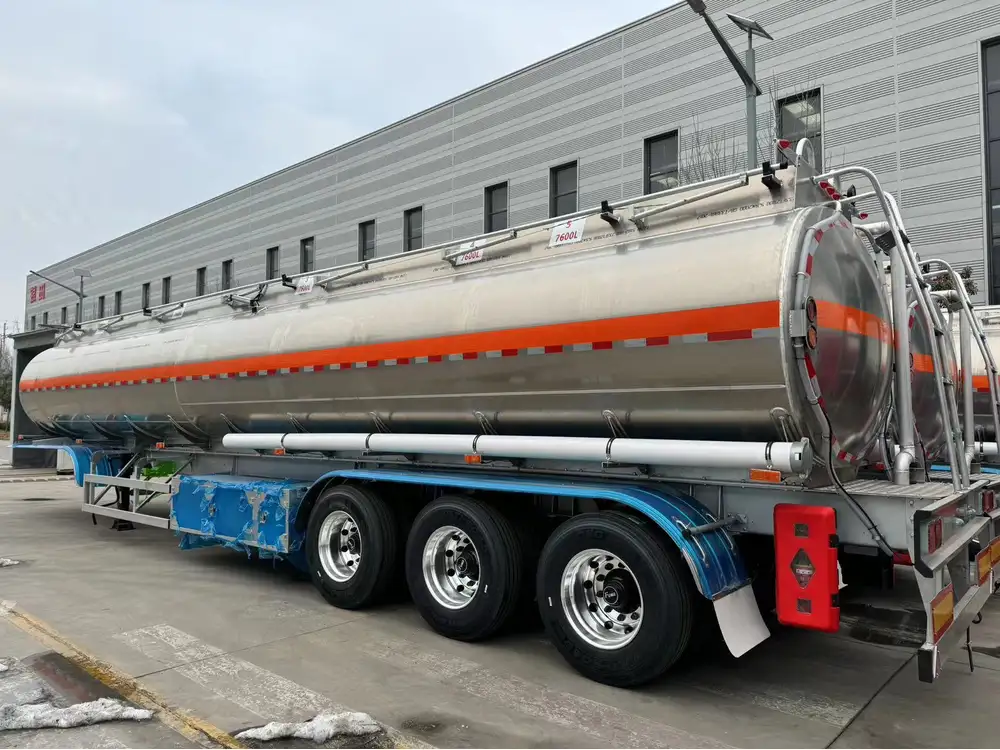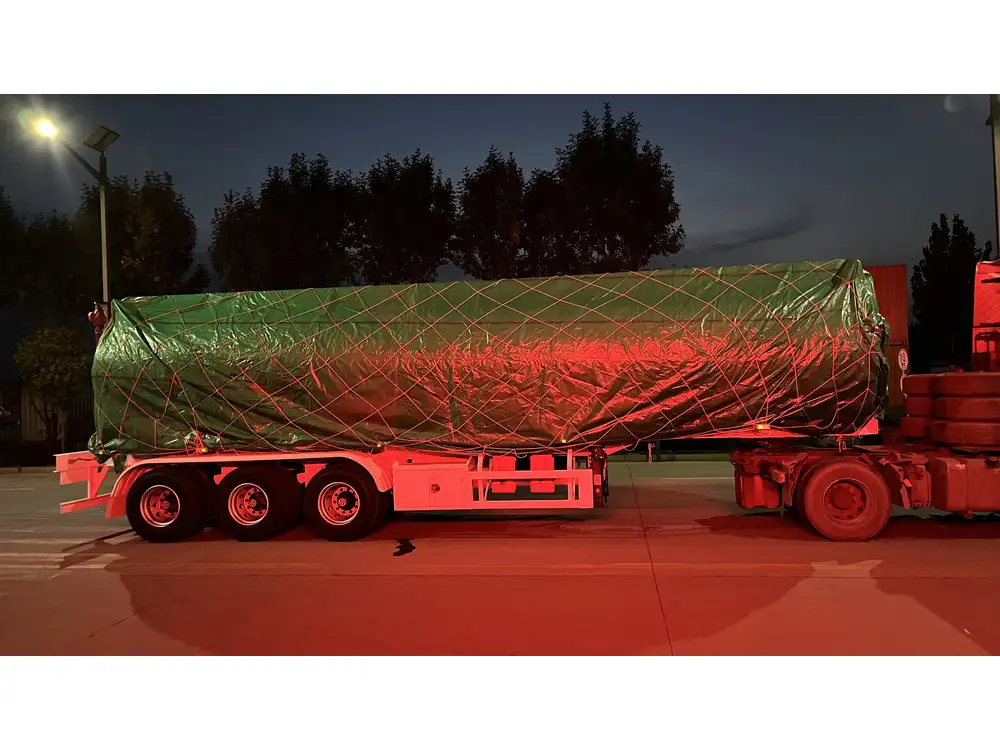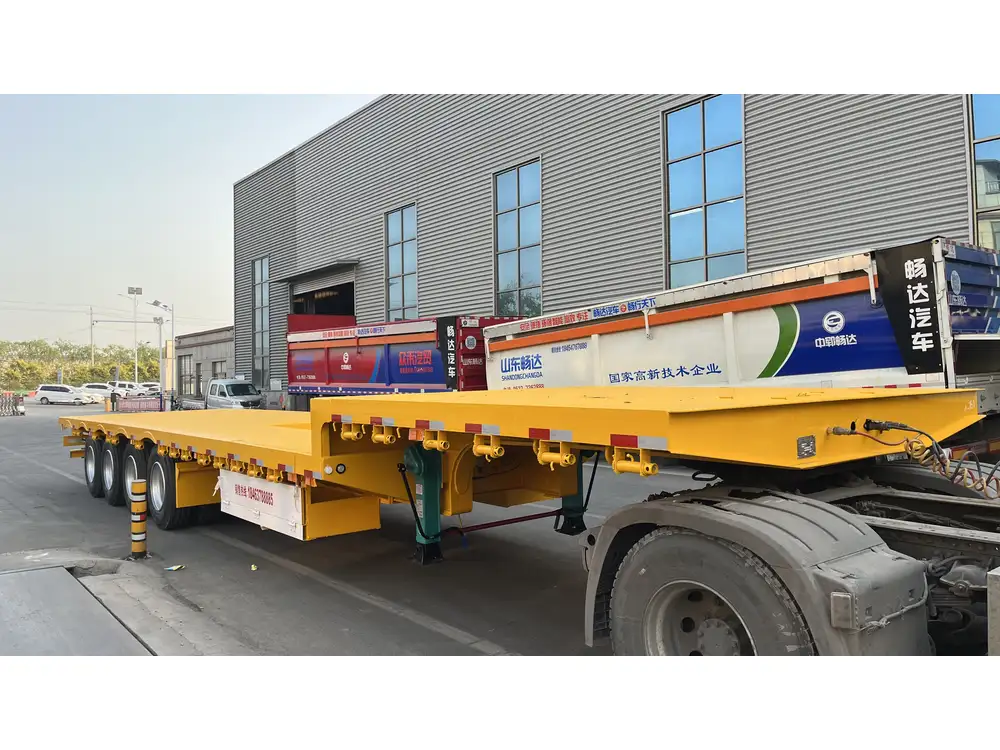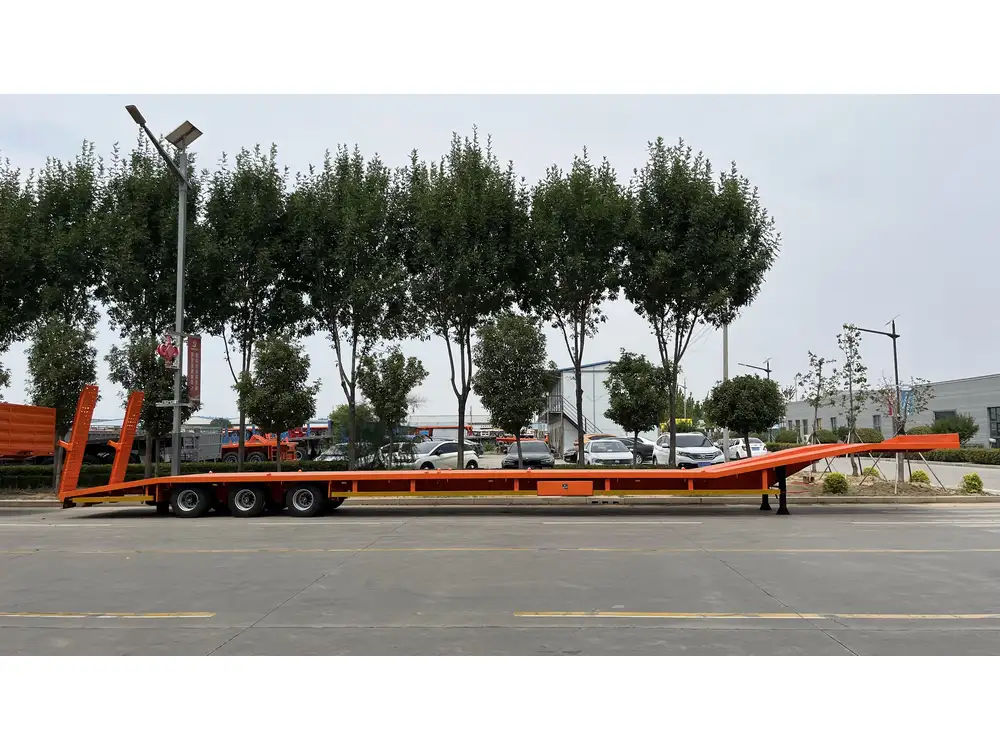Introduction to Semi-Trailers
In the vast world of transportation and logistics, the semi-trailer occupies a particularly vital role. As an essential component of the freight and cargo transport sector, it facilitates the movement of goods across towns, cities, and continents. But what exactly is a semi-trailer? Simply put, a semi-trailer is a trailer without a front axle, designed to be coupled with a tractor unit. Its distinctive design allows it to be hitch-mounted, making it uniquely suited for heavy loads.
The Anatomy of a Semi-Trailer
To comprehend the functionality and utility of a semi-trailer, it is essential to explore its structural components:
| Component | Description |
|---|---|
| Body | The main part of the trailer where cargo is stored. |
| Axles | Sets of wheels that support the trailer, typically ranging from one to three. |
| Landing Gear | Adjustable support legs at the front of the trailer that ensure stability when uncoupled. |
| Kingpin | A pivotal coupling device that connects the trailer to the tractor unit. |
| Suspension System | Mechanisms that absorb road shocks, providing a smoother ride. |
| Brakes | Safety features that allow the trailer to halt efficiently, essential for transporting heavy cargo. |
Each of these components plays a crucial role in the overall functionality and safety of semi-trailers. Understanding this anatomy is vital for both manufacturers and end-users who rely on these vehicles for logistics and transportation.

Types of Semi-Trailers
The versatility of semi-trailers is one of the primary reasons they have become a staple in the logistics industry. They come in various types, each designed for specific functions and cargo types. Here is a breakdown of some predominant types:
1. Flatbed Semi-Trailers
Flatbed trailers are characterized by their open-platform design, making them ideal for transporting heavy or oversized loads such as machinery, construction materials, and beams. Their lack of sides allows for easy loading and unloading from any angle, offering flexibility in operations.
2. Enclosed Semi-Trailers
Unlike flatbeds, enclosed semi-trailers provide protection against weather conditions. Often used to transport fragile items, these trailers safeguard goods from rain, wind, and other external factors. Their design makes them important for businesses that require additional security around valuable merchandise.

3. Refrigerated Semi-Trailers (Reefers)
Refrigerated semi-trailers are equipped with cooling systems that maintain specific temperatures suitable for transporting perishable goods like food products, pharmaceuticals, and flowers. They play an essential role in the supply chain, ensuring that sensitive cargo arrives in pristine condition.
4. Tanker Semi-Trailers
Tanker trailers are engineered for transporting liquids, including chemicals, fuel, and food liquids. Their specialized design minimizes the risk of spillage and contamination, making them indispensable in industries that rely on liquid transport.
5. Drop Deck Semi-Trailers
These trailers have a lower deck height than traditional flatbeds. The reduced height enables the transport of taller loads that would otherwise exceed highway clearance limits. Their construction often requires careful planning and consideration of load distribution.

6. Lowboy Semi-Trailers
Lowboy trailers are designed for transporting heavy equipment like bulldozers and excavators. Their low deck and ramp configurations make loading easier, thereby enhancing safety and efficiency when dealing with heavy machinery.
The Advantages of Using Semi-Trailers
The popularity of semi-trailers in freight transportation can be attributed to their myriad benefits:
Enhanced Load Capacity
One of the foremost advantages of semi-trailers is their ability to handle substantial loads. This capacity is crucial for businesses seeking to optimize transportation costs—fewer trips mean reduced fuel expenses and labor costs.

Improved Maneuverability
By design, the coupling mechanism of semi-trailers enhances their maneuverability, particularly in tight spaces. This quality is essential for urban logistics operations where navigating confined areas can be a challenge.
Flexibility for Various Cargo Types
As discussed, various semi-trailer types cater to specific transport needs. This flexibility allows businesses to select the most suitable trailer for their unique requirements, enhancing efficiency in logistics.
Cost-Effectiveness
In terms of economics, semi-trailers offer a cost-effective alternative to other forms of transportation. Their efficiency in transporting large loads relatively quickly minimizes overall freight costs.

Durability and Longevity
Constructed from robust materials, semi-trailers are designed to endure the demands of road travel. With proper maintenance, they can provide several years of reliable service, which translates to a better return on investment.
Choosing the Right Semi-Trailer
Proper selection of a semi-trailer is critical for optimizing logistical operations. Here are key factors to consider:
Load Weight and Dimensions
Understanding the weight and dimensions of the cargo is fundamental. Certain trailers can only handle specific weights, and overloading can lead to safety issues and regulatory penalties.

Type of Cargo
Identifying the nature of the cargo being transported assists in selecting the right trailer type. Fragile or temperature-sensitive items may require enclosed or refrigerated trailers, whereas bulk materials may be best suited for flatbeds.
Frequency of Use
Consider how often you will be using the trailer. Trailers that are frequently deployed may warrant more robust construction to withstand constant use.
Route Considerations
Analyzing the routes taken can influence your choice. If transporting oversized or heavy loads through urban environments, lowboy or drop-deck trailers may prove beneficial.

Regulatory Considerations
Navigating the regulatory landscape is imperative for semi-trailer operation. Various federal and state regulations dictate standards for weight limits, safety features, and environmental considerations. Here are a few critical regulations to be aware of:
Maximum Dimensions and Weight Limits
Regulations often cap weight limits for trailers at around 80,000 pounds. Additionally, specific dimensional limits (length, width, and height) may apply depending on the state and type of roads used.
Maintenance and Safety Regulations
Regular maintenance is not only best practice for safety but also a legal requirement. State and federal regulations frequently mandate periodic inspections for brakes, lights, and overall trailer integrity.

License and Registration
Operating a semi-trailer typically requires specific licenses for drivers and registration for vehicles. Compliance with these regulations is essential to avoid fines and legal complications.
The Future of Semi-Trailers
The landscape in which semi-trailers operate is continuously evolving. Innovations such as electric and autonomous semi-trailer technology are on the horizon, promising to revolutionize freight transportation.
Electric Semi-Trailers
With the global push for sustainability, electric semi-trailers are gaining traction. These vehicles offer reduced emissions and lower operational costs, signaling a shift toward green logistics.

Autonomous Driving Technology
The exploration of autonomous semi-trailer technology has the potential to reshape the logistics industry entirely. By minimizing the need for human drivers, companies can optimize routes, reduce costs, and enhance safety.
Advanced Materials and Designs
The integration of lightweight but robust materials is enhancing the manufacturing of semi-trailers. These innovations not only reduce the overall weight but also increase fuel efficiency, further optimizing transport operations.
Conclusion
Understanding the definition, composition, types, and advantages of semi-trailers is essential for manufacturers and users alike. As we navigate this dynamic landscape, being informed about regulatory compliance and future trends will empower stakeholders to make smarter, more strategic decisions. Semi-trailers will undoubtedly continue to adapt and thrive in the ever-changing realm of logistics and transportation. Embrace these advancements, understand their frameworks, and utilize them to streamline your transportation processes effectively. Whether you are a manufacturer or a user, the insights detailed here will serve as a robust guide in understanding semi-trailers and their critical role in modern logistics.



